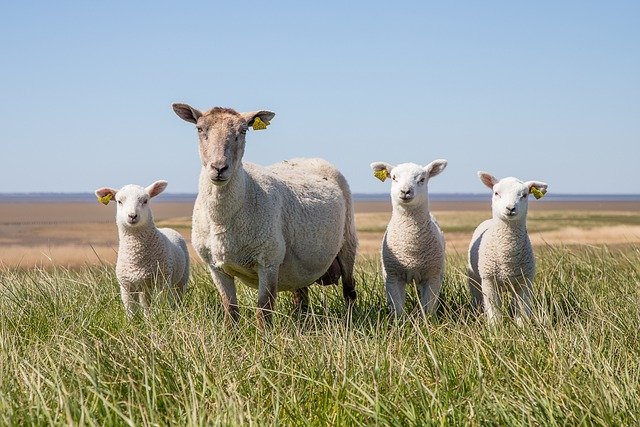Growing alongside fodder crops, weeds are often helpful in filling carts and silos transporting animal feed, but their presence in milk and meat affects the quality. When hungry animals are forced to eat low-quality weed-mixed feed, the meat and milk obtained from the animals have a peculiar taste and a low level of nutritional value.
Some weed components cause disease in animals, while others can be lethal to animals due to their high levels of specific alkaloids, tannins, oxalates, glycosides or nitrates. Chemical analysis of weed and weed free feeds sometimes may not show different nutritive value especially when the mixture contains leguminous weeds but in feeding test animals are more attracted to weed free feed.
Harmful effects of weeds on animals
- The leaves of Lantana (Lantana camara) induce acute photosensitivity and jaundice in animals due to the toxic chemical Lantradine A.
- Carrot grass (Parthenium histyrophorus) on contact with animals causes itching and swelling of the skin and it causes allergy in animals.
- Cocklebur or Xanthium species contains a poisonous glycoside called carboxytractylocid. The seeds of the plant and other grown plants contain the toxin. Pigs and small cattle are more commonly affected. The liver is more affected by this toxic chemical. The most prominent histopathological symptom in cocklebur poisoning is the acute condition leading to massive liver failure. Injury to the liver causes jaundice. Chronic hepatitis is seen in animals that recover from toxic insults. Other pathological symptoms include gastroenteritis, characterized by thickening of the mucosa, hepatic and cardiac hemorrhages. In some cases kidney injury leads to tubular degeneration.
- Johnson grass (Sorghum halepense) is toxic to animals in the tillage stage due to their high prussic acid.
- Ageratum species, which grows in abundance in the Himalayas and the Nilgiris, are often found to be hazardous to livestock.
- Puncture vine (Tribulus terrestris) is a weed of dry land which causes light sensitivity in sheep. Also, its thorny fruits inflict wounds on the hooves of grazing animals. The spines of Tribulus terrestris can puncture the skin of animals. They can also harm the stomach when they are consumed.
- The prickly fruits of Xanthium strumarium, Achyranthus aspera, Cenchrus setigerus, Circium arvense and Cenchrus incertus stick on the mouth, tail and body of animals which badly irritates them.
- Halogeton is a weed of arid and semi-arid regions with its high oxalate content.
- Cichorium intybus, Allium, Argemone mexicana, Brassica keber, Anthemis kotula, Thalapsi, Ambrosia, Helenium, and Oxalis acetosella etc. infects animal products.
- There is growing concern about the rapid spread of Astragalus and Oxytropis species in Rajasthan as they are poisonous to sheep and goats, has abortive and tetratogenic effects on sheep and cattle. Such weeds contain a toxic alkaloid 'swensonine'.
- Rhododendron species has been found to be responsible for causing diarrhea in milch cattle grazing in Kashmir. It affects the milk and blood of animals.
- Leafy spurge (Euphorbia acula) causes diarrhea and weakness in cattle, and is fatal to sheep.
- Crotalaria is fatal for the chick. Sweet clover (Melilotus alba) contains a dicoumarin that acts as an anti blood-coagulant in animals.
- Heliotropium amplexicole, Helenium and Datura stramonium are other disease causing weeds for animals.
- In drought conditions, weeds like Chenopodium, Amaranthus, Cesarium and Polygonum species have nitrate levels of 1000 ppm or more which cause asphyxiation in animals.
- Nettle hairs can cause severe itching and inflammation in animals.
Effects of Weeds on Animal Produced Fibers
Wool is obtained from domesticated sheep, but wool can also be made from the hair of other animals like goat, yak etc. Pashmina is considered to be the best animal fiber in the world; it is obtained from Pashmina goats found in Kashmir and Tibet.
Tribulus terrestris, Cenchrus ciliaris, Xanthium species - It reduces the quality of animal produced fiber, making it of low value by affecting the tensile strength, strength, fineness etc. of the fiber.
Weed management
Management of weeds during animal feed production
Management of weeds in pasture systems should begin long before the forage crop is grown. Special weeds are a serious problem for pastures so it is important to eliminate them beforehand. Especially perennial broadleaf and grasses are much easier to manage before planting forage crops. In addition, biennial weeds should be eliminated before growing fodder crops. If these weeds are not removed before sowing seeds they can persist for many years.
Weed control also includes cropping activities which make the crop more competitive against adverse conditions. Crop activities include - preparation of seed bed, planting at optimum planting date, proper fertilization, planting at high density, using correct seeding rate, selection of high quality crop seed which is free from weeds. Be free, and select varieties adapted to the area.
An integrated program that combines cropping, mechanical, chemical and biological control methods can provide effective economic weed management in pasture systems. Consider how different methods can be coordinated and consider how weed life cycles and other growth characteristics affect management choices. Importantly, prevention is the most important consideration for weed management in established pasture systems.
